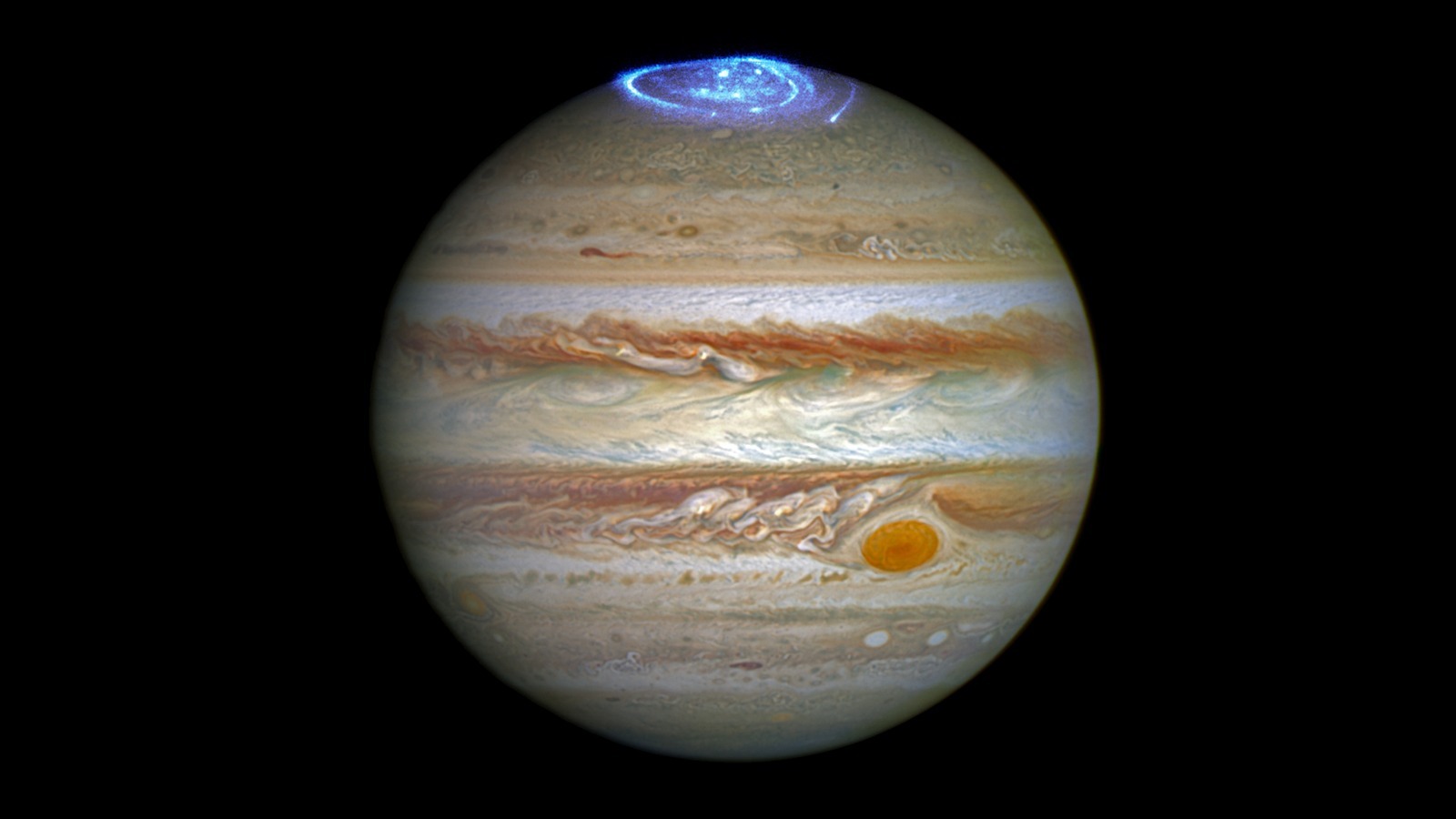
Saturn is the second largest planet in the solar system, and because of the gas giant’s elaborate ring system and beauty, is often considered the crown jewel. About 9 times wider than Earth with an equatorial diameter of 74,897 miles, Saturn (like Jupiter) rotates very fast — finishing a day in just 10.7 hours. Like Jupiter, Saturn’s wind speeds are tremendous, reaching nearly 1,120 mph in the upper atmosphere, far faster than the speed of sound.
The weather systems of Saturn are similar to Jupiter, if not as violent, with the gas giant featuring its own bands, jet streams, cyclones, and anti-cyclones. It too has megastorms, which break out every 20 to 30 years and the storms have a centuries-long impact on Saturn’s atmosphere. Saturn’s northern polar vortex is a sight to behold, a massive 20,000-mile-wide symmetrical hexagon. According to NASA, the six-sided jet stream is thought to be caused by a “deep supersonic jet stream is pinched on all sides by smaller cyclones and pushed upward, forming the hexagon.” Supersonic winds were seen to continue deeper into the atmosphere, 5,000 miles down, at speeds up to 895 miles per hour.
The eye of the central hurricane in Saturn’s hexagon is said to be 50 times larger than the largest hurricane eye seen on Earth, while of the multiple cyclones and anti-cyclones that compose the hexagon, the largest vortex (at 2,200 miles) is twice the size of the largest hurricane on Earth. Apart from this, Saturn also has massive lightning storms, recorded by NASA both in image and audio. The planet holds the record for the longest recorded thunder-and-lightning storm in the solar system, lasting 334 days, with lightning up to 10,000 times as powerful as that seen on Earth. Another lasted a total of 267 days.

